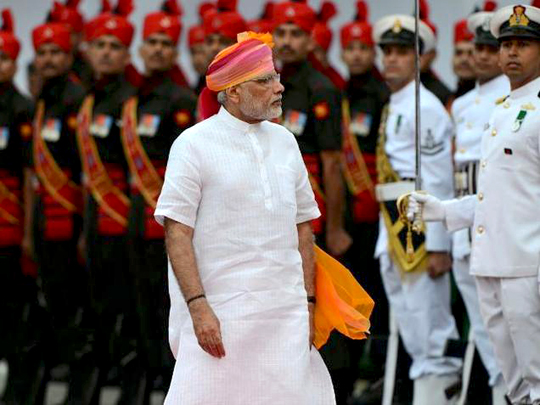Lucknow, Aug 18: Nagla Fatela village in Uttar Pradesh's Hathras district, which found mention in Prime Minister Narendra Modi's Independence Day speech as being “electrified” 70 years after freedom, is still “powerless”.

According to the UP Power Corporation officials here, Nagla Fatela did have power lines, but they were meant only for supplying power for irrigation and running the tubewells and not lighting homes. Some residents, however, had electrified their homes through illegal connections, the officials said. They said that the village was being supplied power for irrigation purposes for the last 25 years.
The corporation sources here said that the work of installing transformers, poles and wires, which was taken up under the Deen Dayal Upadhyaya Village Electrification Project, had almost been completed in the village, but power was yet to be supplied.
A resident of the village said power lines had been installed almost a year ago. The residents also said that the village where the people were shown watching TV during the prime minister's speech in a post on social media by a Union minister was not theirs.
Sources said that power officials rushed to the village to conduct a survey after Modi mentioned the village in his speech. “We are expecting supply of power within a few days,” said a senior official.
Modi, during his I-Day speech, said that Nagla Fatela village was three hours drive from Delhi, but it took 70 years for power to reach the village.





Comments
F E K U!
I really do not understand why these media people are exposing that man's lies day by day? Who world knows he is a liar. Once in a week he speaks truth also. make it a news saying man with 56 inch chest finally spoke a truth!
modhiji good for publicity then nothing
fekuu jii... ab ki baar fekuuu sarkaar...
Fekna mera kaam hey sun'na ulluon k kaam hey..
fekna mera janma sidh adhikar hai!
Add new comment